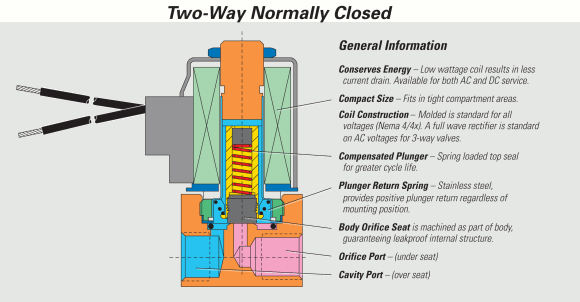


This is where some of the complications that you refer to come in. If it's a high enough rated switch or relay, the metal contacts will not suffer damage, but a weedy relay or transistor needs to be protected by a diode. When de-energized, the plunger or pivoted armature is. When energized, a magnetic field builds up which pulls a plunger or pivoted armature against the action of a spring. The actuator takes the form of an electromagnet. Whatever switches the solenoid, whether it's a switch, relay or transistor, will also get that high voltage on switching off. Solenoid valves are control units which, when electrically energized or de-energized, either shut off or allow fluid flow. Remember that shock you might have got when disconnecting the solenoid. If you want to control the solenoid from something, then a relay or transistor will often be used in series as a switch.

Simulate this circuit – Schematic created using CircuitLab At a minimum, most would chose to use a switch in series. Most people would want something a little more tidy than just connecting wires to the battery. This is due to the inductance of the solenoid producing a high voltage as the current decays quickly on disconnection. This assumes the battery is beefy enough to provide all the current that the solenoid tried to draw.Ĭaution, if you hold one wire in each hand as you disconnect the battery, you may feel a shock. As the solenoid is terminated in two wires, you can just touch the wires to the battery terminals. If the solenoid says 12 VDC on the label, then you can operate it with a 12 V battery.


 0 kommentar(er)
0 kommentar(er)
